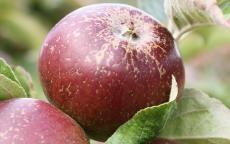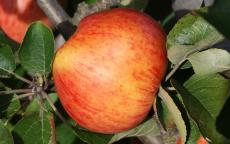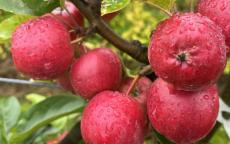- Related apple trees categories:
- Cooking apple trees24
- Eating apple trees65
- Red-flesh apple trees10
- Crab-apple trees3
Cider apple trees
Amere de Berthencourt
Amere de Berthencourt is a traditional French bittersweet cider apple.- Self-fertility: Not self-fertile
- Flowering group: 2
Amere Nouvelle
Amere Nouvelle is a traditional French bittersweet cider apple.29.25€buy- Self-fertility: Not self-fertile
- Flowering group: 3
Bedan des Parts
A traditional French cider variety, producing a high quality bittersweet juice.28.00€buy- Self-fertility: Not self-fertile
- Flowering group: 6
Binet Rouge
Binet Rouge is a traditional French hard cider variety from the Pays d'Auge area of Normandy.- Self-fertility: Not self-fertile
- Flowering group: 4
Dabinett
Dabinett is a traditional English cider apple variety, producing a bittersweet juice.- Self-fertility: Self-fertile
- Flowering group: 6
Ellis Bitter
Ellis Bitter is a traditional and popular English cider apple, producing a bittersweet juice.- Self-fertility: Not self-fertile
- Flowering group: 5
Frequin Rouge
Frequin Rouge is one of the most important of the traditional French bittersharp cider varieties.29.25€buyBest seller- Self-fertility: Not self-fertile
- Flowering group: 4
Harry Masters Jersey
Harry Masters Jersey is a traditional English cider apple variety, producing a bittersweet juice.- Self-fertility: Not self-fertile
- Flowering group: 4
Kermerrien
A traditional French cider variety, grown for the acidic quality of its juice.28.00€buy- Self-fertility: Not self-fertile
- Flowering group: 3
Kingston Black
Kingston Black is one of the premier English cider varieties and produces a bittersharp juice.- Self-fertility: Not self-fertile
- Flowering group: 4
Medaille d'Or
Medaille d'Or is a traditional French cider variety, which produces a full bittersweet juice.- Self-fertility: Not self-fertile
- Flowering group: 6
Muscadet de Dieppe
A very old French bittersweet cider variety.28.00€buy- Self-fertility: Not self-fertile
- Flowering group: 2
Red Foxwhelp
Red Foxwhelp also known as Herefordshire Redstreak, is an old English cider apple variety which produces a dull red bittersweet juice.- Self-fertility: Not self-fertile
- Flowering group: 5
Reinette Abry
A traditional dual-purpose yellow/green apple from northern France.- Self-fertility: Not self-fertile
- Flowering group: 3
Saint Martin
Saint Martin is a traditional French bittersweet cider apple.From 28.00€ to 29.25€buy- Self-fertility: Not self-fertile
- Flowering group: 3
Somerset Redstreak
An English cider apple variety producing a very high-quality bittersweet juice.- Self-fertility: Not self-fertile
- Flowering group: 5
Three Counties
Three Counties is an early-ripening bittersweet cider apple.From 28.00€ to 29.25€buy- Self-fertility: Not self-fertile
- Flowering group: 2
Tremlett's Bitter
Tremlett's Bitter is a traditional English cider apple variety producing a bittersweet juice.29.25€buy- Self-fertility: Not self-fertile
- Flowering group: 5
Vilberie
A traditional French bittersweet cider variety.- Self-fertility: Partially self-fertile
- Flowering group: 6
Wickson Crab
Wickson crab is a popular American hard-cider variety.28.00€buyBest seller- Self-fertility: Not self-fertile
- Flowering group: 2
Yarlington Mill
Yarlington Mill is a traditional English cider apple variety producing a bittersweet juice.- Self-fertility: Not self-fertile
- Flowering group: 5





















